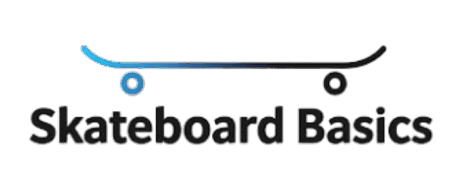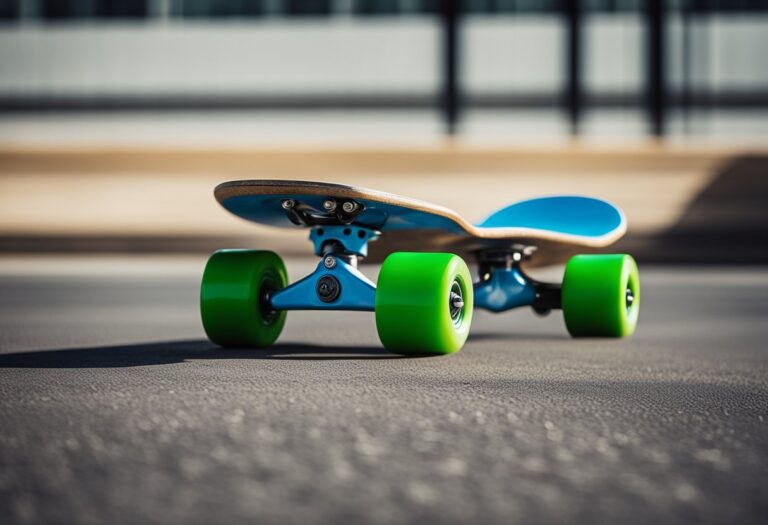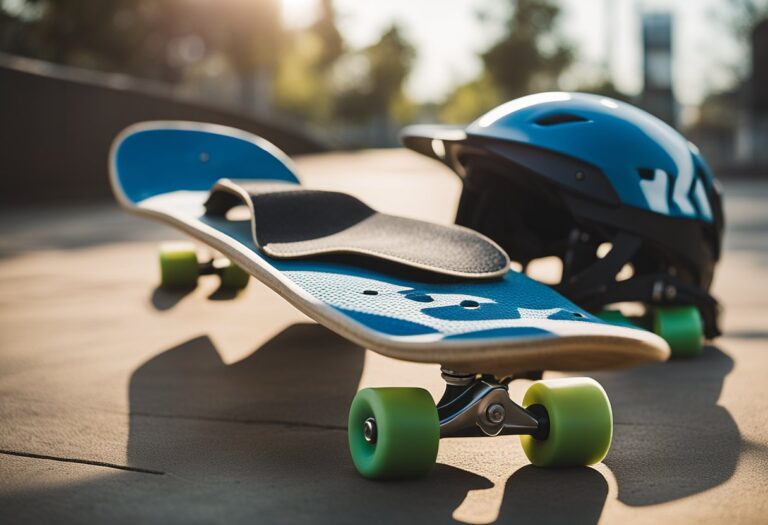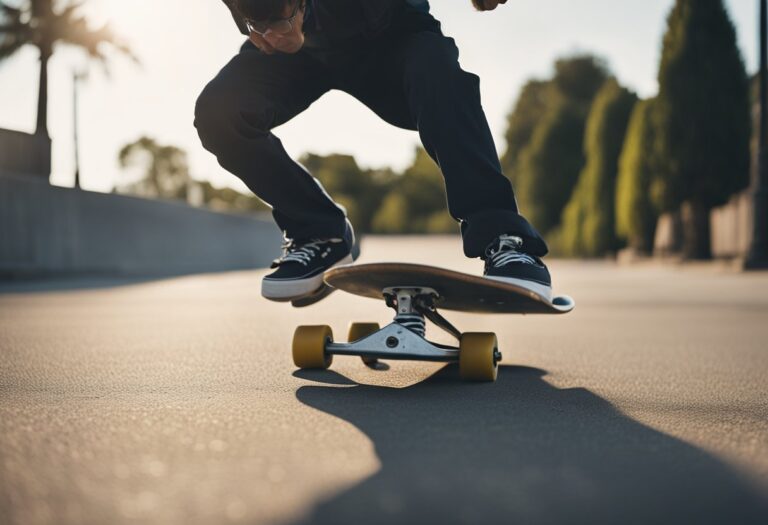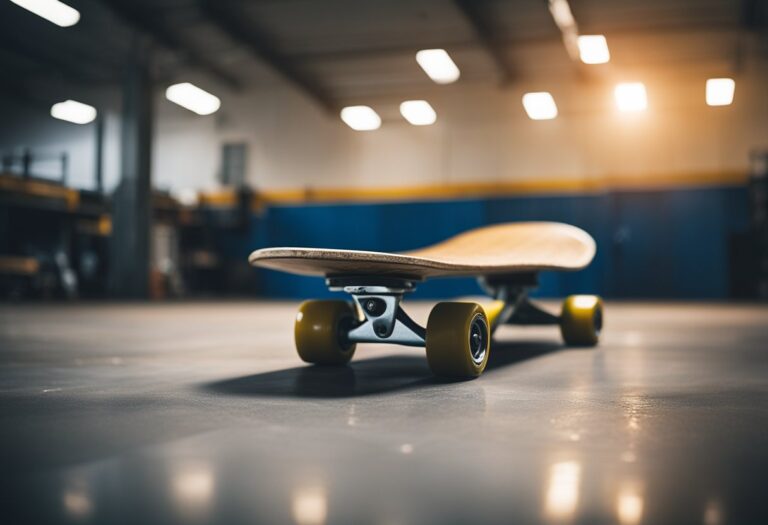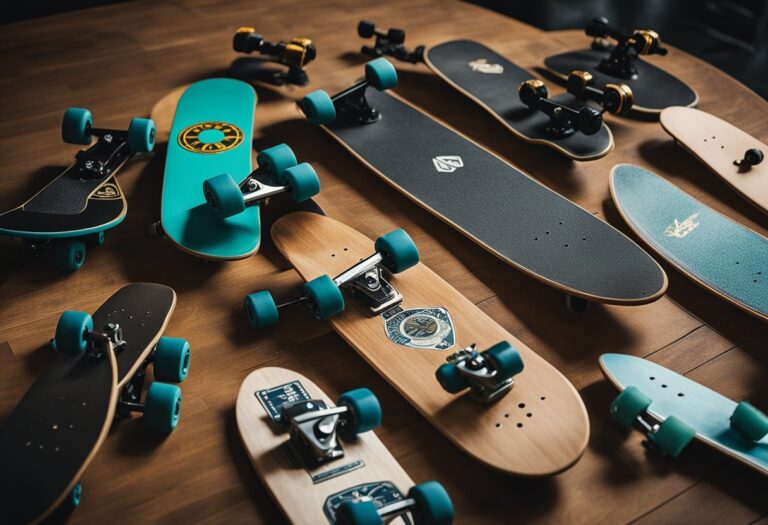Expert Reviews on Beginner-Friendly Skateboards: Making Informed Decisions
Expert reviews on beginner-friendly skateboards are essential for those who are new to the sport. Skateboarding can be an intimidating activity for beginners, especially when it comes to selecting the right skateboard. There are a variety of factors to consider, such as the size and shape of the board, the type of wheels, and the overall quality of the skateboard. Without the proper guidance, beginners may end up with a skateboard that is too difficult to ride or too expensive for their needs.

Fortunately, there are expert reviews available that can help beginners make informed decisions when it comes to selecting a skateboard. These reviews provide valuable information about the different types of skateboards available, as well as their pros and cons. By reading these reviews, beginners can gain a better understanding of what to look for in a beginner-friendly skateboard and avoid making costly mistakes.
Key Takeaways
- Expert reviews are essential for beginners to make informed decisions when selecting a skateboard.
- Understanding skateboard anatomy and choosing the right skateboard are crucial for beginners.
- Community and learning resources can provide valuable support for beginners in their skateboarding journey.
Understanding Skateboard Anatomy

Skateboarding is a fun and exciting sport that requires a good understanding of the skateboard’s anatomy. To make an informed decision when buying a skateboard, it is essential to know the different parts of the skateboard and their functions. This section will provide an overview of the skateboard’s anatomy.
Deck Types and Shapes
The skateboard deck is the board that the rider stands on. Skateboard decks come in different types and shapes, each with its unique features. The most common deck types are:
- Standard: This is the most common type of skateboard deck. It is symmetrical and has a rounded nose and tail.
- Cruiser: Cruiser decks are wider and longer than standard decks. They are designed for cruising and carving.
- Longboard: Longboard decks are longer and wider than standard decks. They are designed for speed and stability.
Skateboard decks also come in different shapes, such as:
- Popsicle: This is the most common deck shape. It is symmetrical and has a pointed nose and tail.
- Fish: Fish-shaped decks have a wider nose and a tapered tail.
- Old-school: Old-school decks have a wider, squared-off tail and a pointed nose.
Trucks and Bushings
Skateboard trucks are the metal T-shaped components that attach the wheels to the deck. Trucks are made up of several parts, including the baseplate, hanger, kingpin, and bushings. Bushings are the rubber components that provide the skateboard’s turning ability.
The hardness of the bushings affects the skateboard’s turning ability. Softer bushings provide more turning ability, while harder bushings provide more stability.
Wheels and Bearings
Skateboard wheels come in different sizes and hardness levels. The size of the wheels affects the skateboard’s speed and stability. Larger wheels provide more speed, while smaller wheels provide more stability.
Skateboard bearings are the metal components that allow the wheels to spin. Bearings come in different grades, with higher grades providing smoother and faster spins.
Grip Tape and Hardware
Grip tape is the sandpaper-like material that covers the top of the skateboard deck. Grip tape provides traction and helps the rider keep their feet on the board.
Skateboard hardware includes the bolts and nuts that attach the trucks to the deck. Hardware comes in different lengths, and it is essential to choose the right length based on the thickness of the deck.
Understanding the skateboard’s anatomy is essential to make an informed decision when buying a skateboard. By knowing the different parts of the skateboard and their functions, riders can choose a skateboard that meets their needs and preferences.
Choosing the Right Skateboard

When it comes to choosing the right skateboard, there are a few factors to consider that can make the difference between a successful and enjoyable experience and a frustrating one. In this section, we’ll go over some important considerations to keep in mind.
Complete Skateboards vs. Custom Builds
One of the first decisions to make is whether to purchase a complete skateboard or build a custom one. Complete skateboards are a good option for beginners as they come pre-assembled and ready to ride. Custom builds, on the other hand, allow for more personalization and can be tailored to specific preferences. However, building a custom skateboard requires more knowledge and experience.
Skateboard Size and Width
Choosing the right size and width of the skateboard is crucial for comfort and stability. Skateboard sizes are measured in inches and typically range from 7.5 to 8.5 inches in width. A general rule of thumb is to choose a skateboard that is the same width as the rider’s shoe size. Additionally, the length of the skateboard should be proportional to the rider’s height.
Material and Durability
The material and durability of the skateboard are also important factors to consider. Skateboards are typically made of wood, with maple being the most common type used for its durability and strength. However, there are also options made of bamboo, plastic, and other materials. It’s important to choose a skateboard that can withstand wear and tear and won’t break easily.
Overall, choosing the right skateboard requires careful consideration of various factors. By keeping these considerations in mind, beginners can make informed decisions and find a skateboard that is comfortable, stable, and durable.
Skateboard Brands and Manufacturers

When it comes to beginner-friendly skateboards, choosing the right brand is crucial. Here are some of the reputable brands and manufacturers that offer quality skateboards for beginners.
Reputable Brands for Beginners
- Element Skateboards – Element is a well-known brand that offers a wide range of beginner-friendly skateboards. They are known for their durability and quality.
- Santa Cruz Skateboards – Santa Cruz is a popular brand that has been in the skateboard industry for a long time. They offer a variety of beginner-friendly skateboards that are perfect for those who are just starting out.
- Powell Peralta Skateboards – Powell Peralta is another well-known brand that offers high-quality skateboards for beginners. They are known for their innovative designs and excellent craftsmanship.
Budget-Friendly Options
- Krown Skateboards – Krown is a budget-friendly brand that offers quality skateboards for beginners. They are perfect for those who are on a tight budget but still want a good quality skateboard.
- Quest Skateboards – Quest is another budget-friendly brand that offers quality skateboards for beginners. They are known for their durability and affordability.
Warranty and Customer Support
When buying a beginner-friendly skateboard, it’s important to consider the warranty and customer support offered by the manufacturer. Here are some brands that offer excellent warranty and customer support:
- Sector 9 Skateboards – Sector 9 offers a lifetime warranty on their skateboards. They also have excellent customer support and are known for their fast response times.
- Enjoi Skateboards – Enjoi offers a 30-day warranty on their skateboards. They also have great customer support and are known for their friendly and helpful staff.
In conclusion, choosing the right skateboard brand and manufacturer is important when looking for a beginner-friendly skateboard. By considering reputable brands, budget-friendly options, and warranty and customer support, beginners can make informed decisions and find the perfect skateboard for their needs.
Riding Basics for Beginners

Stance and Balance
The first step to riding a skateboard is to find a comfortable stance. Beginners can try standing with their feet shoulder-width apart, with one foot facing forward and the other at a slight angle. It is essential to maintain balance by keeping the knees slightly bent and the weight centered over the board. Leaning too far forward or backward can cause the rider to lose control and fall off the board.
Pushing and Turning
Pushing is the act of propelling the skateboard forward by using one foot to push off the ground while the other foot stays on the board. Beginners can practice pushing while standing still before trying to ride. Turning involves shifting the weight to one side of the board while using the toes and heels to guide the direction. It is crucial to practice turning and stopping to avoid accidents.
Safety Gear and Precautions
Wearing safety gear such as helmets, knee pads, and elbow pads is highly recommended for beginners. It is also essential to ride in safe areas away from traffic and pedestrians. Beginners should avoid attempting tricks or riding on steep hills until they have mastered the basics. Skateboarding can be a fun and rewarding activity, but safety should always come first.
Where to Buy Beginner Skateboards

When it comes to buying a beginner-friendly skateboard, there are several options available. In this section, we will explore the different places where you can purchase a skateboard suitable for beginners.
Online Retailers
Online retailers are a great option for purchasing beginner skateboards. They offer a wide range of options at competitive prices, and you can easily compare different models and brands. Some popular online retailers for beginner skateboards include Amazon, Skate Warehouse, and Tactics.
When purchasing a skateboard online, it is important to pay attention to the specifications and make sure that it is suitable for beginners. Look for skateboards with softer wheels, wider decks, and trucks that are easy to turn.
Local Skate Shops
Local skate shops are another great option for purchasing beginner skateboards. They offer personalized service and can help you find the perfect skateboard for your needs. They also often have a wider selection of beginner-friendly skateboards than big-box stores.
When visiting a local skate shop, be sure to ask for recommendations and advice from the staff. They can help you find a skateboard that is suitable for your skill level and budget.
Second-Hand Market
The second-hand market is a great option for purchasing beginner skateboards at a lower price. You can find used skateboards on websites like Craigslist, Facebook Marketplace, and eBay. However, it is important to be cautious when purchasing a used skateboard.
When buying a used skateboard, inspect it carefully for any damage or wear and tear. Look for cracks in the deck, worn out wheels, and loose trucks. Additionally, make sure that the skateboard is suitable for beginners before making a purchase.
In conclusion, there are several options available for purchasing beginner skateboards. Whether you choose to buy online, at a local skate shop, or in the second-hand market, be sure to do your research and choose a skateboard that is suitable for your skill level and budget.
Skateboard Maintenance Tips

Skateboards require regular maintenance to ensure they perform at their best and last longer. Here are some essential maintenance tips that beginners should know:
Cleaning and Storage
After every use, it’s essential to clean your skateboard to remove dirt, debris, and moisture that can damage the board’s components. Use a dry cloth to wipe the board’s surface and a damp cloth to clean the wheels and trucks.
When storing your skateboard, keep it in a dry and cool place to prevent moisture damage. Avoid leaving it in direct sunlight or near heat sources as this can warp the board.
Regular Check-Ups
Regular check-ups are crucial to ensure that your skateboard is in good condition and safe to ride. Check the following components regularly:
- Wheels: Check for wear and tear and replace them when they become too worn down.
- Trucks: Make sure the bolts are tight and the kingpin is not damaged.
- Bearings: Clean and lubricate bearings regularly to ensure they spin smoothly.
- Deck: Check for cracks or signs of wear and replace the deck if necessary.
Replacing Parts
Some skateboard components, such as wheels and bearings, need to be replaced regularly. Other parts, like the deck, may last longer but will eventually need to be replaced. Here are some signs that indicate it’s time to replace a part:
- Wheels: If the wheels are worn down or have flat spots, it’s time to replace them.
- Bearings: If the bearings are dirty or making noise, it’s time to clean or replace them.
- Trucks: If the kingpin is damaged or the truck is bent, it’s time to replace it.
- Deck: If the deck is cracked or warped, it’s time to replace it.
By following these maintenance tips, beginners can ensure their skateboards perform at their best and last longer. Remember to always wear protective gear and ride safely.
